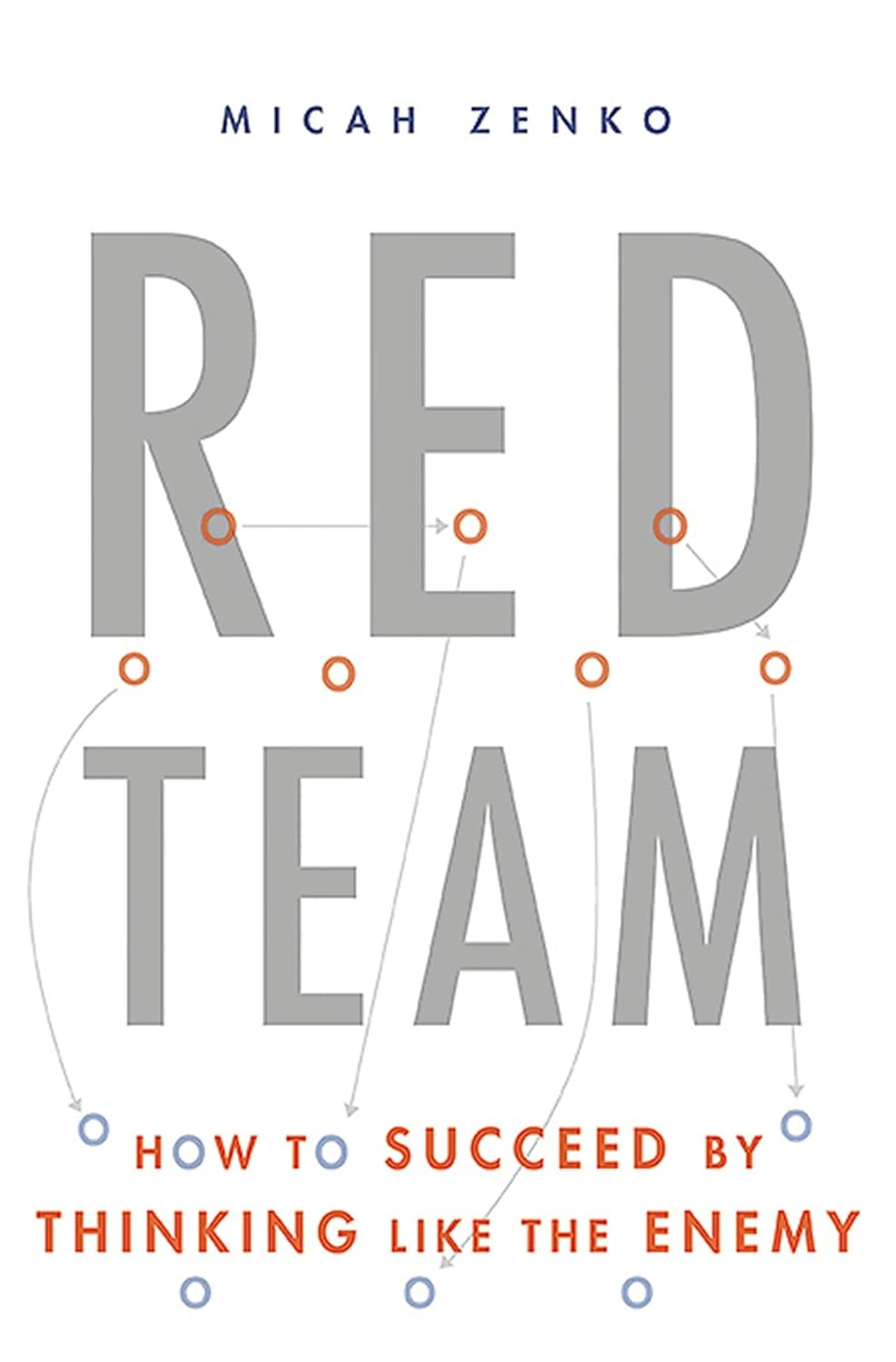Book Review: Red Team - How to Succeed By Thinking Like the Enemy
Review of the book Red Team - How to Succeed By Thinking Like the Enemy by Micah Zenko. Book published in November 2015 by Basic Books.
Continuing on my quest to learn more about red team operations, I picked up the book, Red Team - How to Succeed By Thinking Like the Enemy by Micah Zenko. This time I am not guilty of judging the book by its cover because this book has been on my reading list for some time. I had been delaying reading it because this is not a technical book and has little to do with cyber red team operations. I decided to give it a read as part of my 100 Days of Red Team challange.
It provides a deep exploration of red teaming as a strategic practice. It illustrates how organizations across various domains—military, intelligence, cybersecurity, and business—use red team exercises to identify vulnerabilities, challenge assumptions, overcome group think and anticipate threats. The author has presented a well-researched analysis of red team methodologies, their effectiveness, and challenges they face.
Content Overview
This book is divided into six parts. First part discusses best practices for the success of a red team and for obtaining true value out of a red team exercise. Parts two to five discuss red team case studies across, military, intelligence, homeland security and private sector domain. Part six addresses some misconceptions about red team exercises and also talks about how red teaming might evolve in future.
The book traces the origins of red teaming, linking it to historical practices like the Devil’s Advocate in the Vatican, and explores its modern applications. The author has categorized different types of red team exercises, including simulations, vulnerability probes, and alternative analysis, explaining how they operate within various institutions. Through extensive case studies, the book highlights both successful and failed red team exercises, drawing insights from organizations like the CIA, NYPD, and corporate entities. A key theme is the role of leadership in enabling or hindering red team effectiveness. The authour has also discussed best practices for setting up and running a red team, as well as common pitfalls that can render these efforts ineffective.
Salient Features
Covers red teaming beyond cybersecurity, including its application in business, military, intelligence, and homeland security.
Features numerous real-world case studies that provide valuable insights into the benefits and challenges of red teaming.
Emphasizes the importance of management buy-in for the success of red team initiatives.
Helps readers understand red teaming as a broader strategic concept rather than merely a cybersecurity testing technique.
Offers insights into the role of leadership and organizational culture in determining the effectiveness of red teams.
Provides practical takeaways for both practitioners and decision-makers interested in leveraging red teaming.
Not so salient Features
While the book effectively illustrates the benefits of red teaming through case studies, it could have provided more guidance on cultivating a red team mindset.
The focus is more on describing red team outcomes rather than offering a structured methodology for developing red team capabilities.
My rating 4.5 / 5.0
Join my Cyber Security book club on Discord and share your views on this book (or any other security book of your choice).
Other book reviews
Cyber Warfare – Truth, Tactics, and Strategies by Dr. Chase Cunningham
Practical Threat Intelligence and Data-Driven Threat Hunting by Valentina Costa-Gazcón
Penetration Testing Azure for Ethical Hackers by David Okeyode, Karl Fosaaen
Red Team Development and Operations by Joe Vest and James Tubberville





